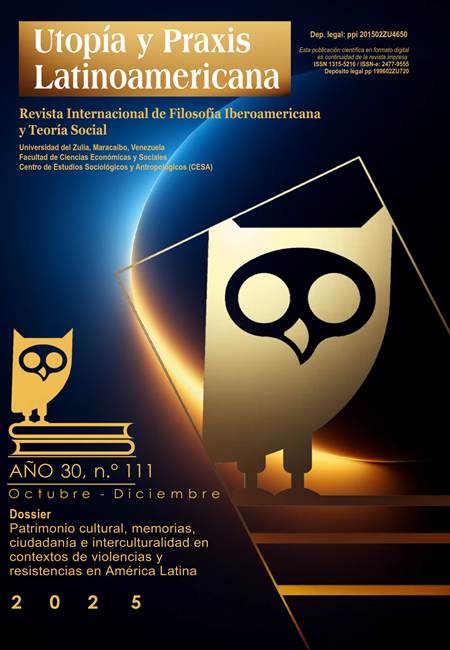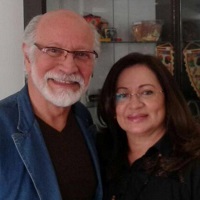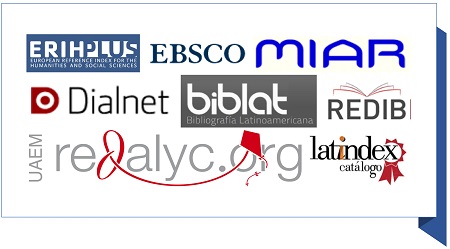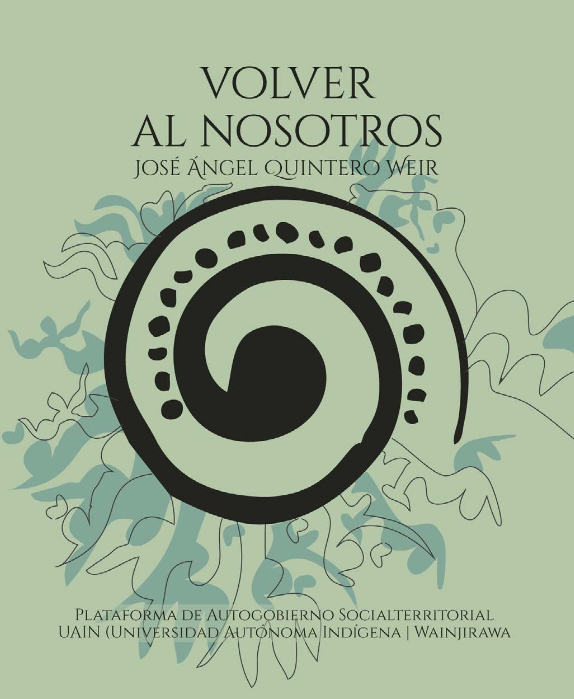Nearby Heritage: a proposal to preserve our cultural legacies from community perspectives
Abstract
This article explores the tension that arises in the binomial framework proposed by cultural policies focused on the study and preservation of cultural legacies, understood as "tangible and intangible" or "immaterial and tangible" cultural heritage. It suggests that there are cultural practices whose reproduction requires both material and narrative support, so their preservation does not necessarily fall within this heritage binomial. Using a critical reading of cultural policies and reflections arising from practical experience as a methodology, it is found that certain human creations are subject to heritage recognition. This excludes other creations that are of lesser interest in the face of global trends or national culture, but which play a close role in community life. As an intercultural approach, it is proposed to understand these processes from the perspective of the affective and communal ties of interpretation and management of cultural legacies, that is, as "close heritages."
References
BALLART, J. (1997). El patrimonio histórico y arqueológico: valor y uso, Madrid: Ariel.
BARTOLO, E. I. (2023). El resguardo escrito del conocimiento en torno a la danza del Carnaval del huehue del Chirrión en la Junta Auxiliar de Ometepetl, Tetela de Ocampo, Puebla. Tesis de licenciatura en Lengua y Cultura, Universidad Intercultural del Estado de Puebla.
BECK, L., y CABLE, T. T. (2002). Interpretation for the 21st Century: Fifteen Guiding Principles for Interpreting Nature and Culture. Sagamore Publishing.
CORTES, M. G. (2024). Plantas medicinales del Jardín Botánico Federico Cortes: usos para el tratamiento de enfermedades del Alma. Tesis de licenciatura en Lengua y Cultura, Universidad Intercultural del Estado de Puebla.
CRESPI, M. V. (2012). La interpretación del patrimonio: Una estrategia para la comunicación del patrimonio cultural. Revista PH, (81), 100-103.
DOMÍNGUEZ, J. M. (2005). Interpretación del patrimonio cultural y natural: Guía práctica para turismo, museos y espacios naturales. Alianza Editorial.
FALS, O. (1987). The Application of Participatory Action-Research in Latin America. International Sociology, 2(4), 329–347.
FERNÁNDEZ, F. J. Y FERNÁNDEZ, L. (2019). “Construyendo una identidad: reconocimiento y apropiación de prácticas culturales locales entre niños y adolescentes de San Antonio Siho, Yucatán” en Los investigadores de la cultura Maya, México: Universidad Autónoma de Campeche.
HOELSCHER, S. (2011). “Heritage” en: Macdonald, S. (editora). A Companion to Museum Studies, Sussex: Wiley-Blackwell, pp. 198-218.
INALI. Atlas de las lenguas indígenas nacionales de México, https://atlas.inali.gob.mx/variantes/ficha/070107
KEMMIS, S., MCTAGGART, R., y NIXON, R. (2014). The Action Research Planner: Doing Critical Participatory Action Research. Singapore: Springer.
LEWIN, K. (1946). Action Research and Minority Problems. Journal of Social Issues, 2(4), 34-46.
MCNIFF, J., y WHITEHEAD, J. (2006). All You Need to Know About Action Research. London: SAGE Publications.
OSTROM, E. (2003 [1990]). Governing The Commons. The Evolution of Institutions for Collective Action. Cambridge: Cambridge University Press.
SANTOS, J. R. (2003). “O patrimônio como categoría de pensamento” en Abreu, Regina y Mario Chagas (coords.) Memória e patrimônio. Ensaios contemporâneos, Río de Janeiro: DPSA Editora, pp. 21-29.
UNESCO (1948). Declaración Universal de Derechos Humanos, París: Unesco.
UNESCO (1954 y 1999). Convención para la Protección de los Bienes Culturales en caso de Conflicto Armado, París: Unesco.
UNESCO (1972). Convención para la Protección del Patrimonio Mundial Cultural y Natural, París: Unesco.
UNESCO (2003). Convención para la Salvaguardia del Patrimonio Cultural Inmaterial, París: Unesco.
VARGAS, G. (2015). “Reflexiones sobre el trabajo de campo: la utopía intersubjetiva en un mundo desigual”, Nueva antropología, 28(83), 163-186.










